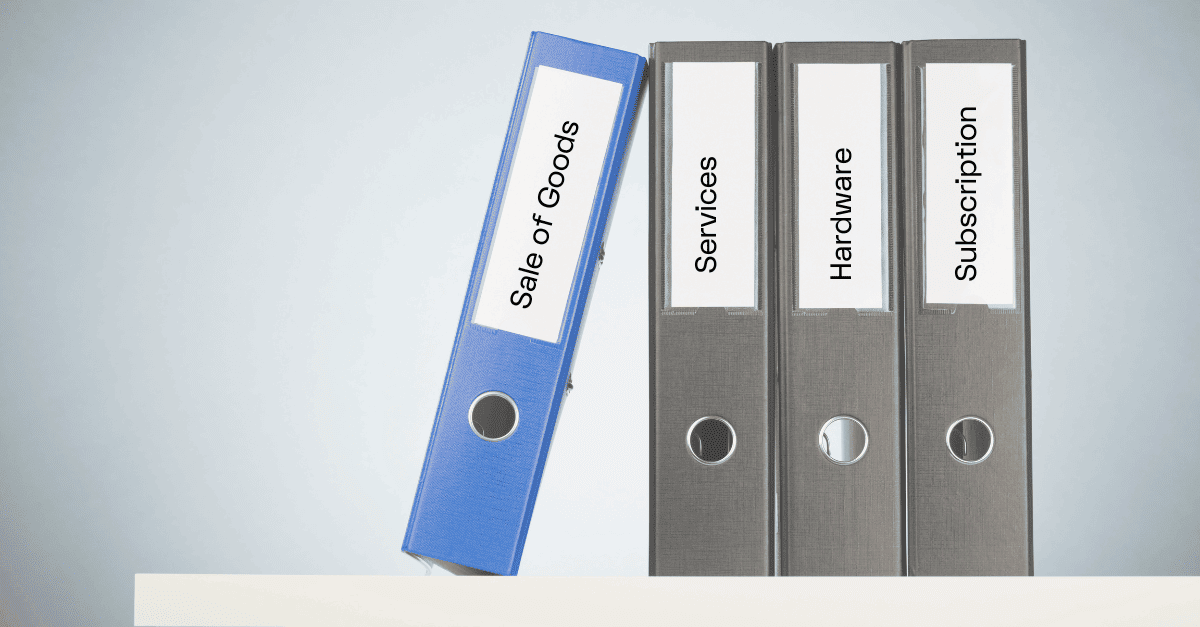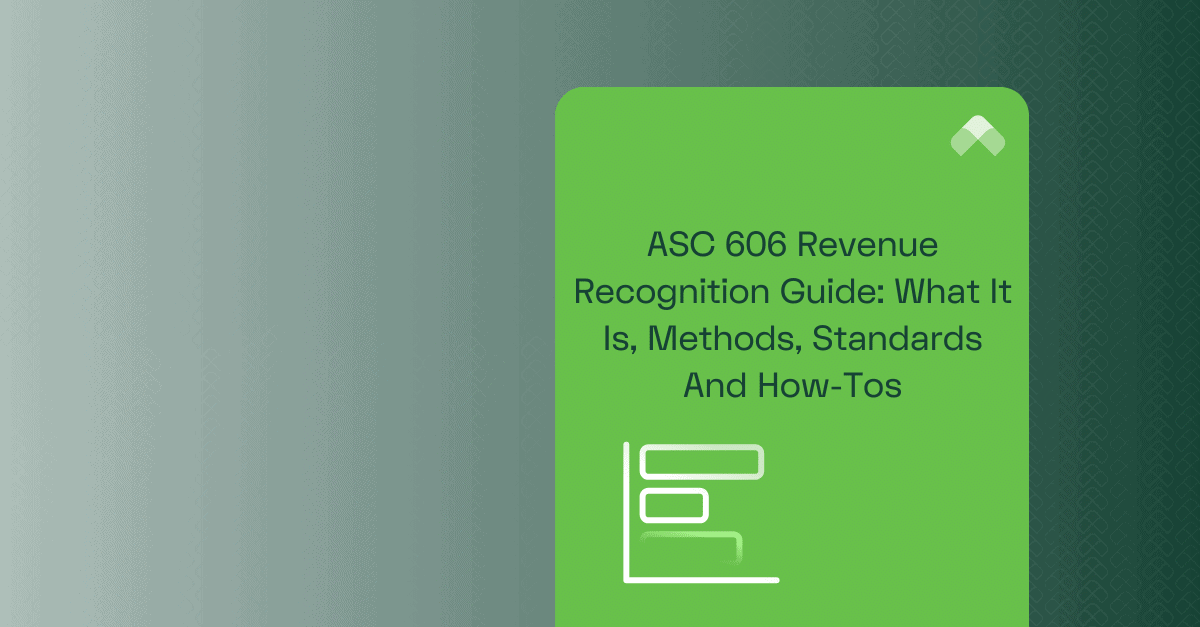Revenue recognition is at the heart of transparent financial reporting. As a result, companies must find a way to properly recognize revenue according to ASC 606 guidelines or risk alienating their investors and suffering legal and reputational harm. While there are many revenue recognition methods that comply with ASC 606, one method, in particular, the percentage of completion method, can be one of the more complex methods.
Commonly used by construction companies and other businesses that carry out long-term projects, this method determines revenue and expenses based on the amount of work completed. In this article, we’ll dive into a detailed explanation of the percentage of completion method, why it’s important, and ways to calculate it, in addition to providing some real-world examples of when it can be used.
What Is the Percentage of Completion Method?
A great place to start is by discussing how the percentage of completion method came to exist. Construction companies struggled to accurately depict the true financial picture of their long-term projects. The percentage of completion method was developed to address this, marking a shift from recognizing revenue upon the completion of a project, the completed contract method, to one where revenue was recognized as a project advanced.
This change offered investors and other stakeholders a clearer representation of income and expenses throughout a project’s lifecycle. Nowadays, other industries that feature prolonged project timelines, including the software development, infrastructure, and manufacturing fields, also find this particular revenue recognition method useful. By measuring the percentage of work accomplished against the total project scope, revenue is realized following the percentage complete, providing a more precise financial outlook and ensuring that revenues are matched to related expenses.
Importance of the Percentage of Completion Method
While many different revenue recognition methods comply with ASC 606, the percentage of completion method specifically helps companies with projects extending over multiple accounting periods correctly realize their revenue. As a result, their financial statements accurately display their revenue, bolstering investor trust and supporting informed decision-making.
The percentage of completion method hinges on three fundamental components: Total contract price, total estimated costs, and costs incurred to date. Let’s break down what each of these terms mean:
Total Contract Price: The total contract price is the project’s overall value. It is the cornerstone of the revenue calculation.
Total Estimated Costs: The total estimated costs refer to all the expenses anticipated to fulfill the project. Together, these offer a comprehensive view of the company’s financial commitments.
Costs Incurred to Date: Costs incurred to date represent the actual expenditure at a given point. This is a critical piece of knowledge to assess the project’s advancement and forecast future requirements.
These three components significantly impact revenue recognition under the percentage of completion method. For example, the total estimated costs and costs incurred to date determine the completion percentage and, hence, dictate revenue recognition as the project advances. Precisely estimating and diligently tracking the costs incurred to date is also vital in accurately recognizing revenue each accounting period.
Implementing the percentage of completion method not only upholds compliance with regulatory bodies like the Financial Accounting Standards Board (FASB) and the International Accounting Standards Board (IASB) but also paints an unambiguous picture of a company’s financial health. By recognizing revenue in proportion to project completion, businesses present a more realistic and comprehensive view of their earnings and ongoing activities. This transparency boosts stakeholders’ trust, safeguards the organization’s financial integrity, and fortifies the reliability and comparability of financial statements across the board.
Ways to Calculate Percentage of Completion
In order to use the percentage of completion method, it’s essential for a company to accurately estimate its total revenue and all corresponding costs for the project. Its calculations depend on the estimated total cost incurred over the contract’s duration. Note, however, that the terms of each contract will individually impact how revenue is recognized.
Cost-to-Cost
One way to calculate a project’s percentage of completion is to use the cost-to-cost approach. In this case, a company compares its actual costs to its estimated total project cost to determine its completion percentage.
Put more simply:
POC = (Costs incurred to date / estimated total costs) * 100
Revenue is then recognized after applying this percentage to the transaction price.
Efforts-Expended
Then there’s the efforts-expended approach. In this completion method, we compare the total estimated effort with the actual effort expended to date.
How does one figure out how much effort has already been put in? The answer is by looking at the labor or machine hours completed to date or the amount of materials used.
Here’s the efforts-expended formula:
POC = (Effort expended to date / estimated total effort) * 100
Units-of-Delivery
Finally, there’s the units-of-delivery method, which can be used when specific units are delivered as part of a project. This approach compares the total number of units expected to be delivered to the number already provided.
In other words:
POC = (Number of units delivered to date / estimated total number of delivered units) * 100
This method helps companies assess the percentage of units delivered, which affects how they recognize revenue, expenses, and gross profit each period. Moreover, it accommodates additional revenue streams tied to completed units, influencing the overall assessment of project progress and financial performance.
Percentage of Completion Method Examples
The percentage of completion method is often applied in industries like construction, real estate and software development, engineering, and others that offer long-term service contracts to their customers. It’s suitable for these industries because it allows them to recognize revenue as work progresses, reflecting the true value of the services rendered.
For example, a construction firm building a stadium, skyscraper, or bridge would likely use this approach to measure the percentage of work completed against the total project so it can recognize revenue accordingly. Similarly, a software company that employs long-term service contracts or projects that extend over multiple accounting periods might also use this method to report revenue.
Let’s go over a few quick examples:
Using the cost-to-cost approach, if a project’s total costs are $10 million and its current costs are $4 million, we would divide $4 million by $10 million to get .4. Multiply that by 100 to obtain a percentage of completion of 40%.
In the case of the efforts-expended method, if a project is expected to take 15,000 hours to complete and labor hours currently worked are 2,500, divide 2,500 by 15,000 to get .16. Multiplied by 100, the completion percentage is approximately 16%.
And, finally, if we’re using the units-of-delivery approach and 500 units are expected to be delivered, but only 250 have been delivered to date, we would divide 250 by 500 to get .5. Multiply that by 100, and it’s clear that 50% of the project has been completed to date.
Note that the percentage of completion approach aligns with accrual accounting, a generally accepted accounting principle (GAAP). Revenue is matched with related expenses to accurately represent a company’s financial performance during an accounting period.
When applying the percentage of completion method, adhering to domestic and international financial reporting standards like ASC 606 and IFRS 15 is crucial. These standards provide guidelines on how and when to properly recognize revenue, including identifying a performance obligation and determining when it has been satisfied to ensure consistent and transparent financial reporting. Failure to comply with these standards can lead to misleading financial statements, negatively impacting investor trust and decision-making processes.
ASC 606 and IFRS 15 ultimately emphasize identifying performance obligations, measuring progress toward fulfilling these obligations, and appropriate revenue recognition in each respective accounting period. They require companies to regularly assess and reassess contracts so their revenue recognition reflects the progress made toward completing the contract.
Unlike the completed contract method, this approach helps ensure that revenue is accurately recorded throughout long-term projects or contracts. Moreover, complying with the accounting standards codification of ASC 606 and IFRS 15 guarantees consistency, comparability, and reliability in financial reporting.
Percentage of Completion Is the Best Revenue Recognition Method for Certain Companies
Your accounting team likely knows how absolutely essential it is that they recognize your company’s revenue correctly—the list of reasons why is long. However, if your organization offers its customers long-term contracts that stretch out over multiple accounting periods, knowing how to handle it can be a real challenge.
Fortunately, the percentage of completion method can allow your team to correctly match revenue to related expenses and measure the percentage of work completed against the total project scope. So whether your business is considering automating revenue recognition or prefers to perform it manually, the percentage of completion approach might be the best revenue recognition method for your company and its particular needs.
How RightRev Can Help
From the outside, revenue recognition can seem pretty straightforward. In reality, it is often overwhelmingly complex, confusing, and tedious.
Fortunately, RightRev offers an ASC 606 revenue recognition software solution that dramatically simplifies revenue recognition. Flexible, scalable, and highly customizable, RightRev’s software recognizes revenue just as you want—set your rules once, and off it goes!




